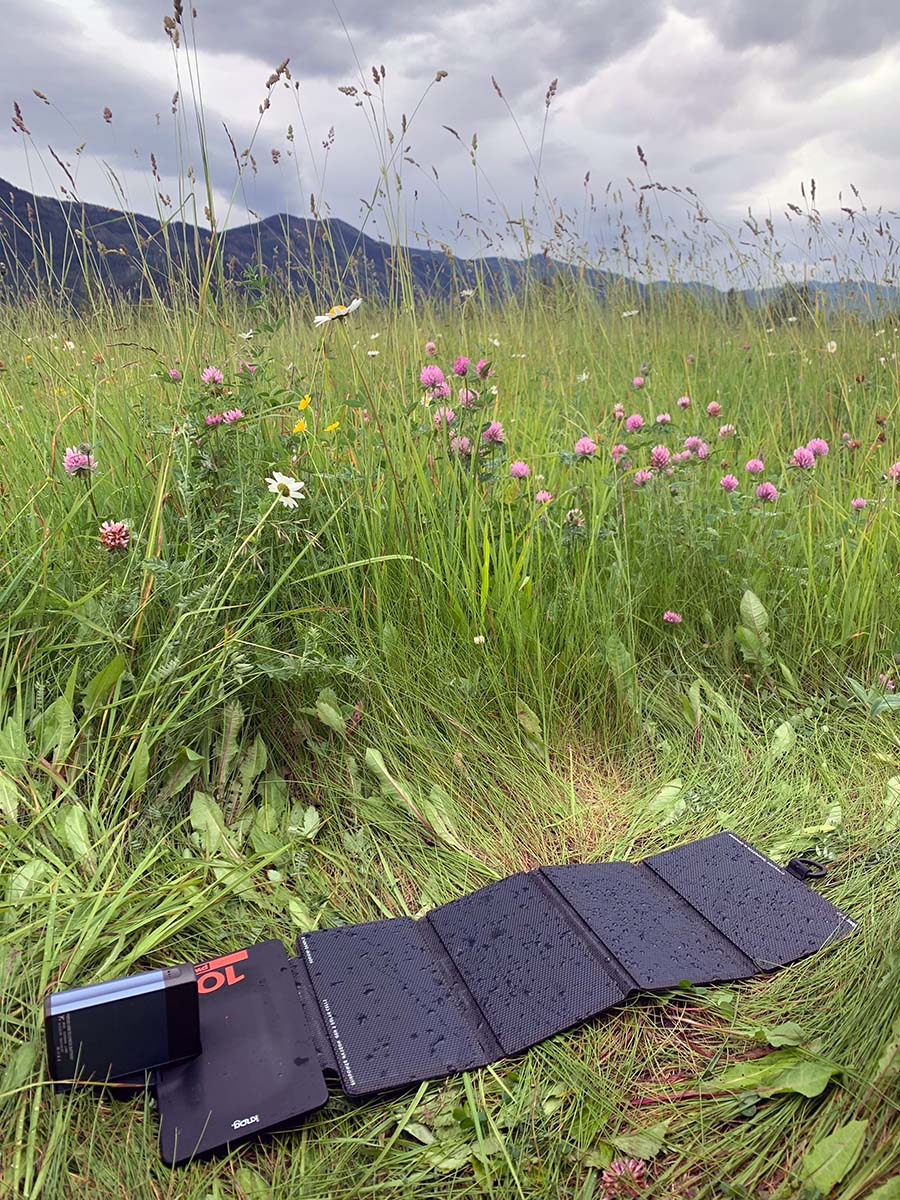Solar-Powered Bikepacking
When planning to solo bikepack the Great Divide Mountain Bike Route, I romanticized that I would finish preparations with a healthy cushion of time before embarking on my journey. In reality, I learned that I would never feel completely ready to take on an adventure of that scale and that I simply had to start anyway. One thing that provided peace of mind, however, was carrying solar panels. By doing so, I knew I could charge my navigation tools almost anywhere and continue planning on-the-go as needed.
The 10W PWR Solar Panel by Knog fits easily at the bottom of my framebag. I mostly needed juice for my smartphone, to navigate with the Adventure Cycling Bicycle Route Navigator app, and for my satellite phone, to update my apprehensive family. Although I could charge these devices when I resupplied in towns, I was reassured to know I would not find myself in a desperate situation if cold nighttime temps drained my batteries. Additionally, having the Knog Solar Panel gave me the rejuvenating option of taking a rest, or “zero,” day in the beautiful backcountry (as long as I had enough food and water) rather than in a costly or damp motel room.
The Pros
The panels worked very effectively in unobstructed sunlight. I would charge my phones directly if hanging out or, more often, I would charge an external power bank that I could use much more conveniently later, even while riding, if I needed to. I also discovered, when my framebag filled with rain one night, that the panels are as water-resistant as advertised (as long as the cable port protector is closed).
The Stuff to Consider
First, the technology has “solar” in the name for a reason. Without direct sunlight, like on an overcast day, the panels can maintain a device’s existing charge, but they hardly add any power, if at all. On a trip like mine, at altitude in the summer, finding sunshine was hardly a problem. But the panels might not be so helpful on a route like the Arctic Postal Road …
Secondly, I realized a tiny bit of strategy is involved to charge a device in the sun without overheating it. My favorite method was to use a fairly long cable so I could place the panels in the sun and still have my plugged-in phone tucked away in the shade.

Lastly, the Knog solar panel price ($99.95) matches that of all the comparable products I’ve seen. But I really appreciated investing in an external battery ($55–$120 from Knog), too, for the convenience. My power bank held 36 Wh (about three phone charges), so I usually only charged it once while resupplying in town and once more in between stops on longer stretches.
All of that said, the solar panel and external battery were super worth the price and weight (roughly 16 oz and 7 oz, respectively) for me because they allowed me to feel safer on my ride and spend more time outside, protecting and enhancing my bikepacking experience!

